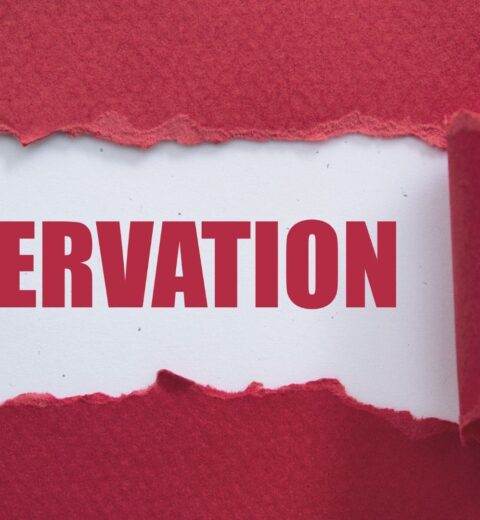Some of the links in this article are "affiliate links", a link with a special tracking code. This means if you click on an affiliate link and purchase the item, we will receive an affiliate commission.
The price of the item is the same whether it is an affiliate link or not. Regardless, we only recommend products or services we believe will add value to our readers.
By using the affiliate links, you are helping support our Website, and we genuinely appreciate your support.
[matched_title]

By Cailyn Haubein
Editor’s Note: This post is part of a series contributed by the ESA Student Affairs Committee. See other posts by and for entomology students here at Entomology Today.

Last fall, I left a technician position with the United States Forest Service (USFS) to begin my graduate career. My goal was to research the impacts of forest management on insect diversity, with the hope of eventually returning to work in a research position with the USFS. Since then, I have continued to work with the federal system by conducting research on federal land and engaging with local National Park Service employees.
I was truly inspired by my time with the USFS and aspired to one day join the ranks of entomologists and other researchers in federal positions. Being a technician gave me key experience in fieldwork and research execution going into my graduate career. I now understand the importance of connections between field research and the habitat managers who put them into practice.
However, due to federal hiring freezes and terminations in 2025, I worry that the career path I had chosen might lead to a dead end. This worry increases with news of potential budget cuts and further workforce downsizing. While I still have passion for government service, it no longer seems like an achievable goal in the near future.
My experience is not a unique one. Many scientists are inspired by their time in federal service. Graduate students like me tailor their research and skills to fit the needs of federal agencies.
What are Other Students Feeling?
As the firings and funding cuts have grown at federal agencies, many other students and early career scientists are feeling uncertain. To illustrate this, I reached out to other graduate students across my university.
Students are experiencing heavy mental weights and emotional exhaustion. Similar to myself, students I spoke with were excited to join the federal workforce because they are motivated to make a difference in conservation. Many of us have structured our lives to achieve this goal, but now it feels like a career in federal service is no longer an option. Working in the government, connected to policy and application, one can directly influence conservation. Now it appears that this no longer serves as a government priority.
Removing probationary and temporary employees will leave a fundamental gap in expertise and available workers in scientific fields. We are all concerned that the job markets will be flooded with scientists with more experience, leaving little availability for recent graduates.

What Happens Next?
This is the question on all of our minds, but, specifically as graduate students, how do we prepare ourselves for our dream jobs in the current context of high uncertainty and systemic disruptions? The most consistent advice we’ve been given by mentors and faculty is to stay in school for as long as possible. Many students completing their Ph.D.s have spent years working toward a federal position at the cost of paths untraveled. While some who have teaching experience may shift to academia, many, including recent graduates and early career scientists, don’t have that option.
How do we know what to do while still acknowledging that this federal landscape is continuing to change dramatically? We are told to continue as normal until further notice, but we don’t feel normal. I’m grappling with a choice: Do I continue down this career path or find another? Right now, I feel like I have no choice but to keep going forward.
What are We Left With?
Despite the disorienting changes around me, my goals remain unchanged. I still want to enhance our understanding of insects through research. Current government sentiments cannot stop us from pursuing our passion. We can still speak out about the things we care about by engaging in our communities.
My peers agree, and despite the fear they feel, they are emboldened by recent changes to continue fighting for science. Students are staying positive, turning their attention to nonprofit and state agency positions. Seeing how many policymakers hold science in disregard makes our jobs even more important. We can choose to work through our stress and lend a hand. The support we find in the scientific community is like no other. We’re in this together.
Why is This Important?
By taking funds away from federal agencies, we are not only altering the lives of workers but also changing how science is funded in the United States. There is a clear difference in motivation when comparing private and public funding of science, especially regarding the work and research conducted with those funds. Private funding is typically solicited to further the goals of a company and its owners, while public funding is intended to bring about improvements for the broader public. When research is publicly funded, we reduce biases driven by the need to increase profits or appease the ideals of higher-ups.
These perspectives are more than just a personal complaint; my colleagues and I are concerned for the future of science in the United States, and every American should be, too. We’re not thinking selfishly about losing jobs and opportunities; we’re also saddened about our country losing people and programs that serve the public good.
Cailyn Haubein is a graduate student studying the impacts of management practices on moth diversity. In addition to research, she is passionate about engaging in insect conservation and outreach. Email: cailynhaubein@gmail.com.
Related
Discover more from Entomology Today
Subscribe to get the latest posts sent to your email.
BBM JOB




